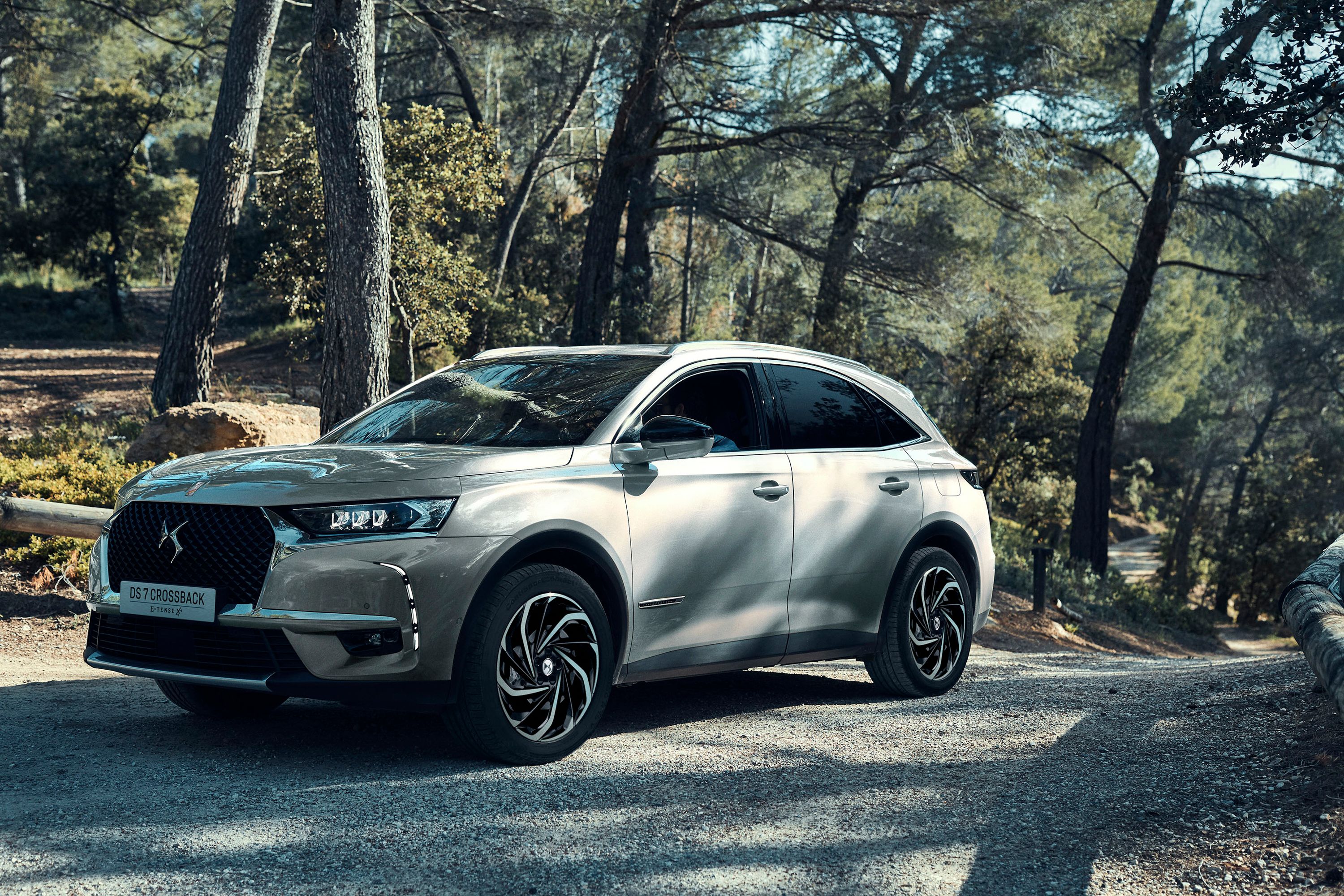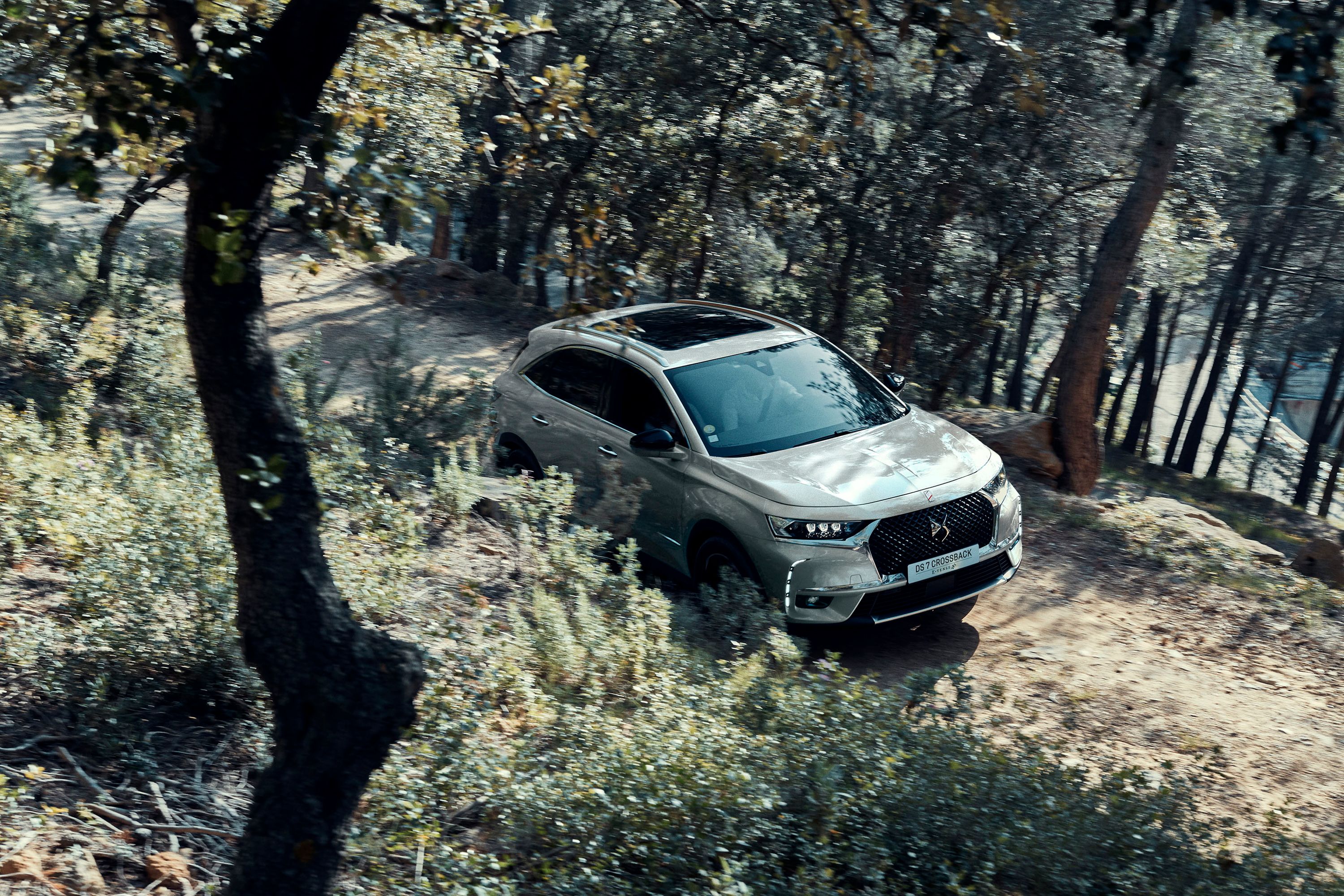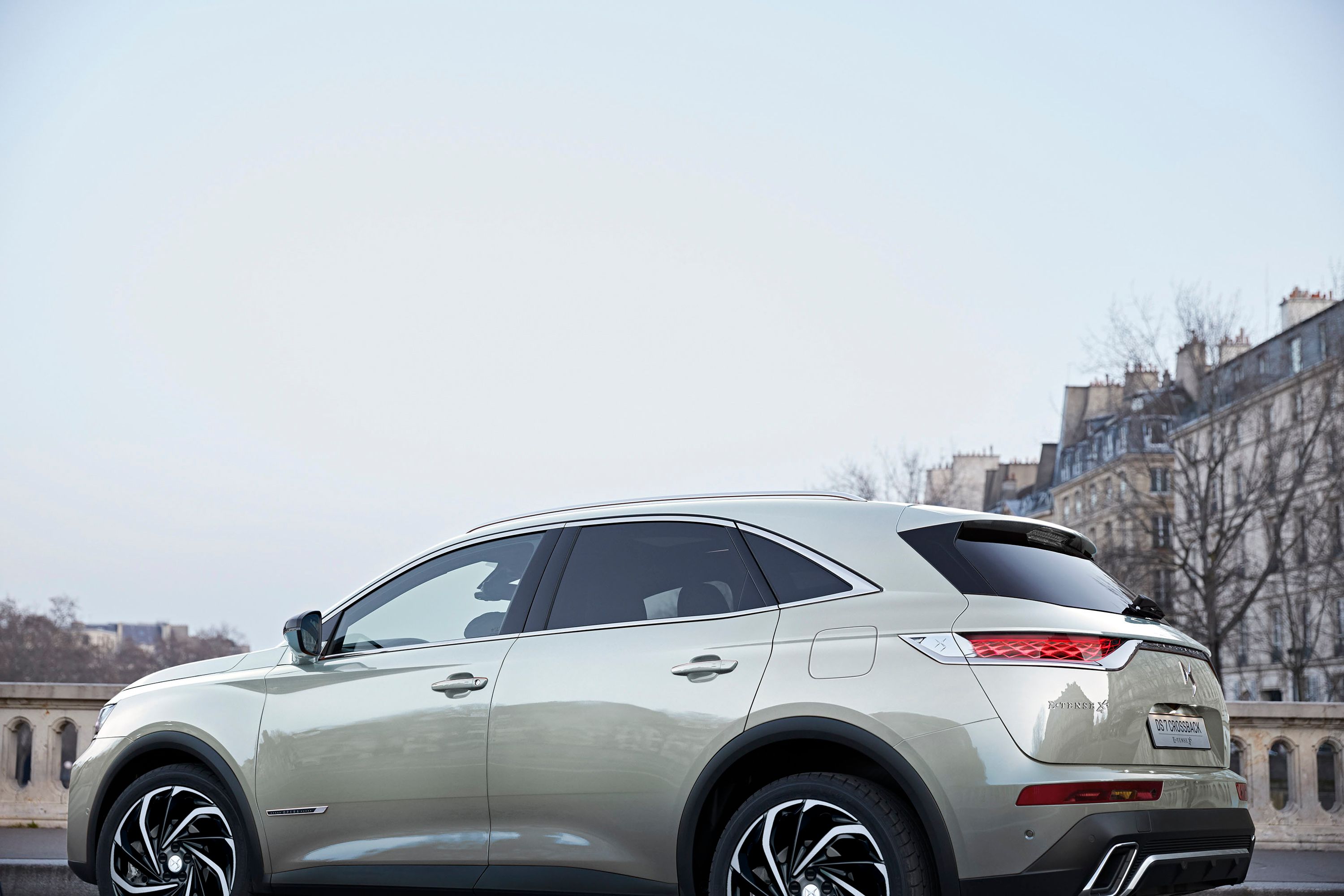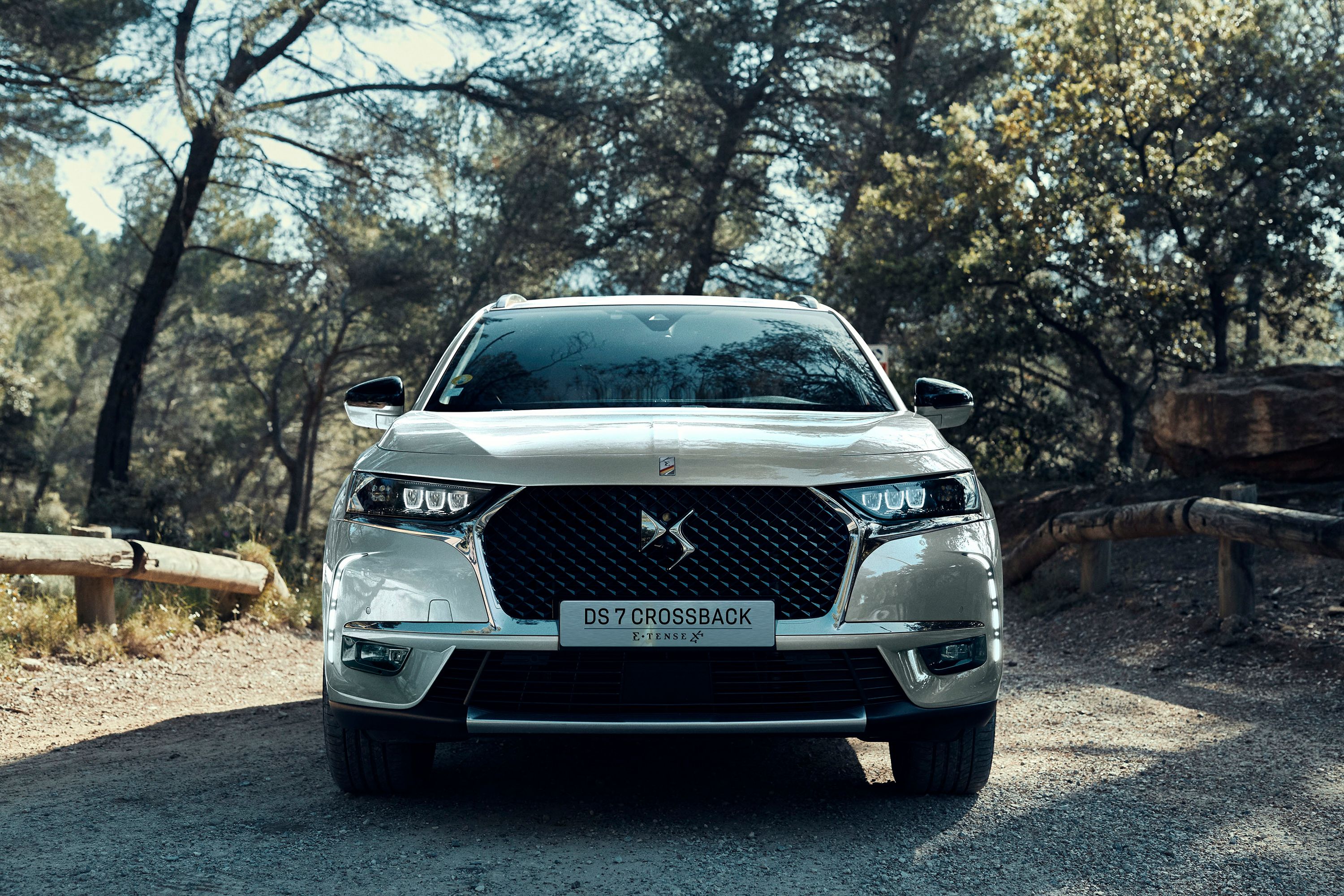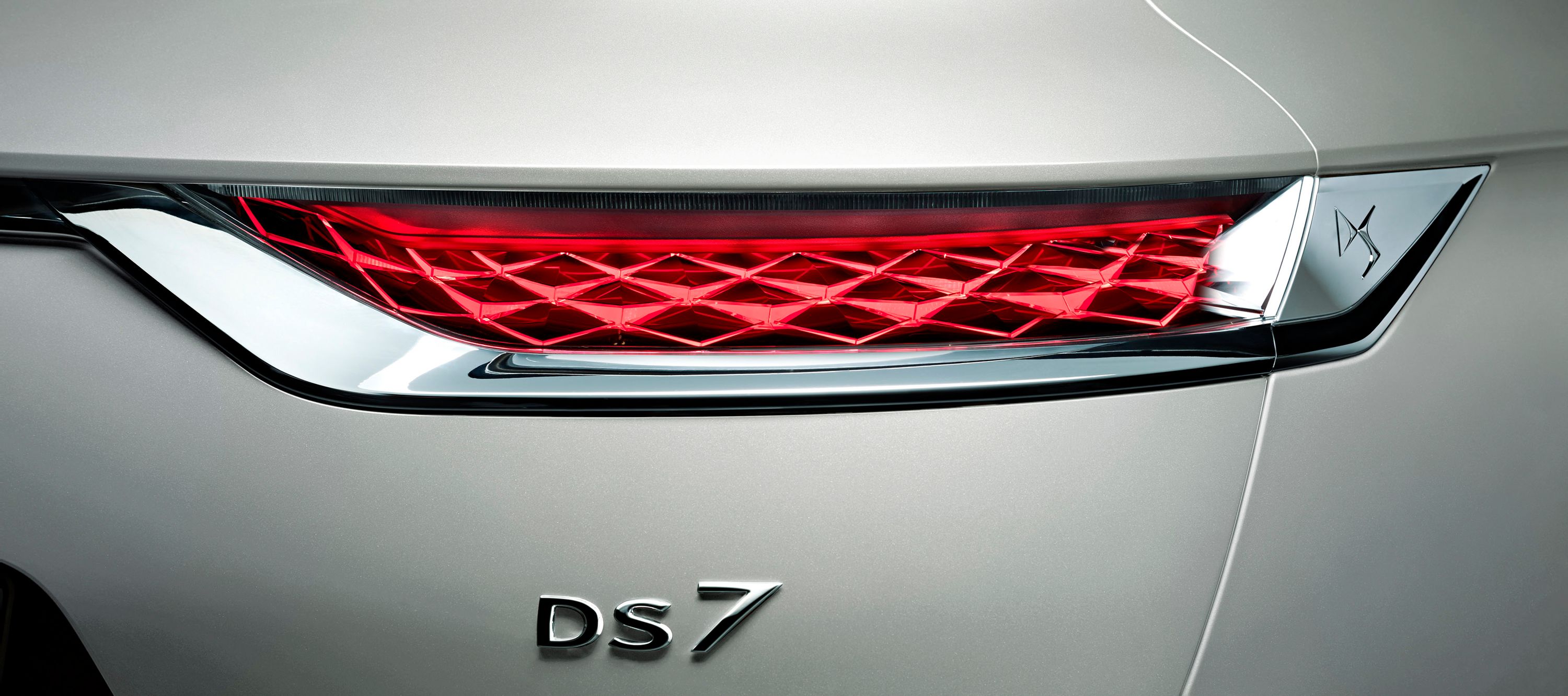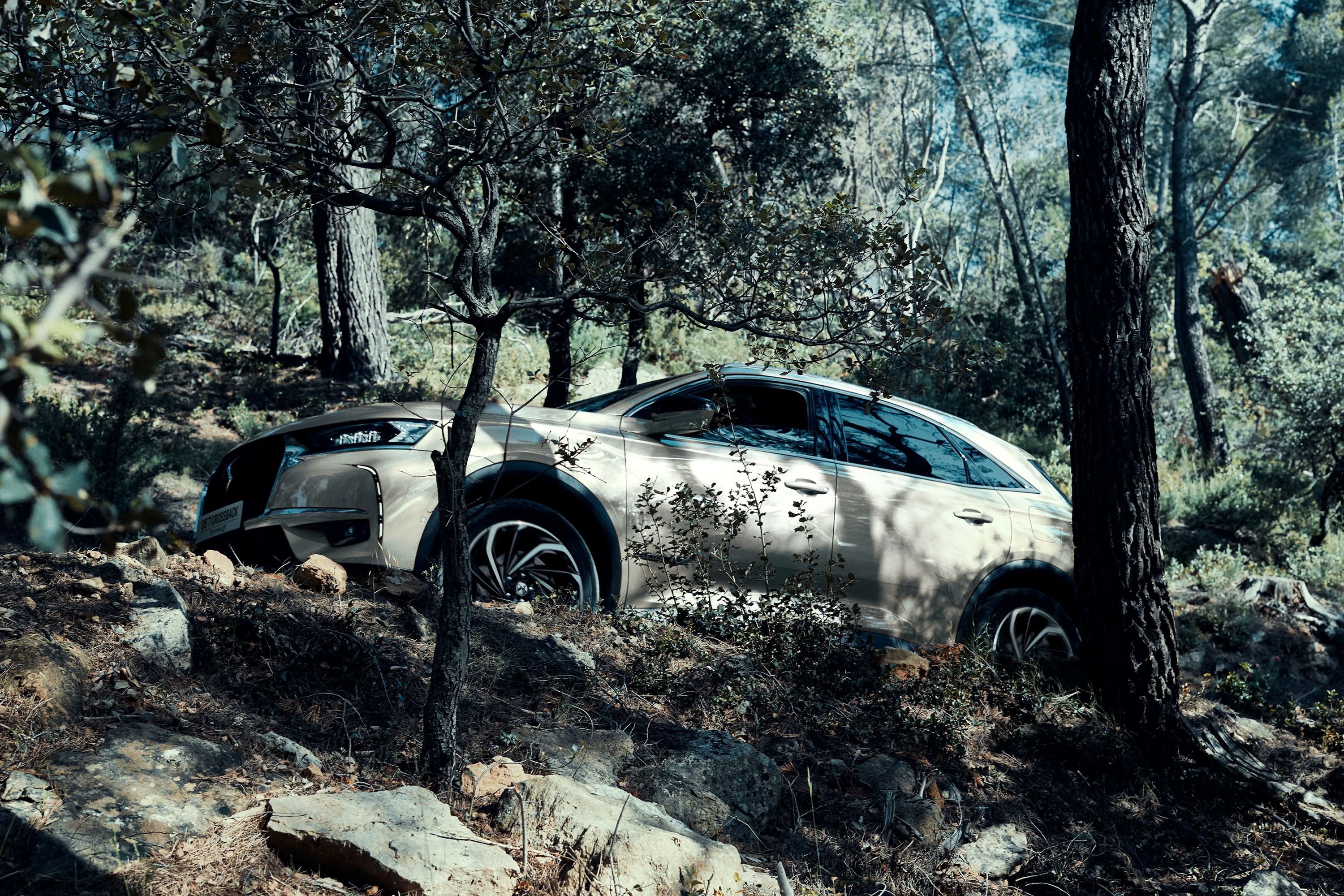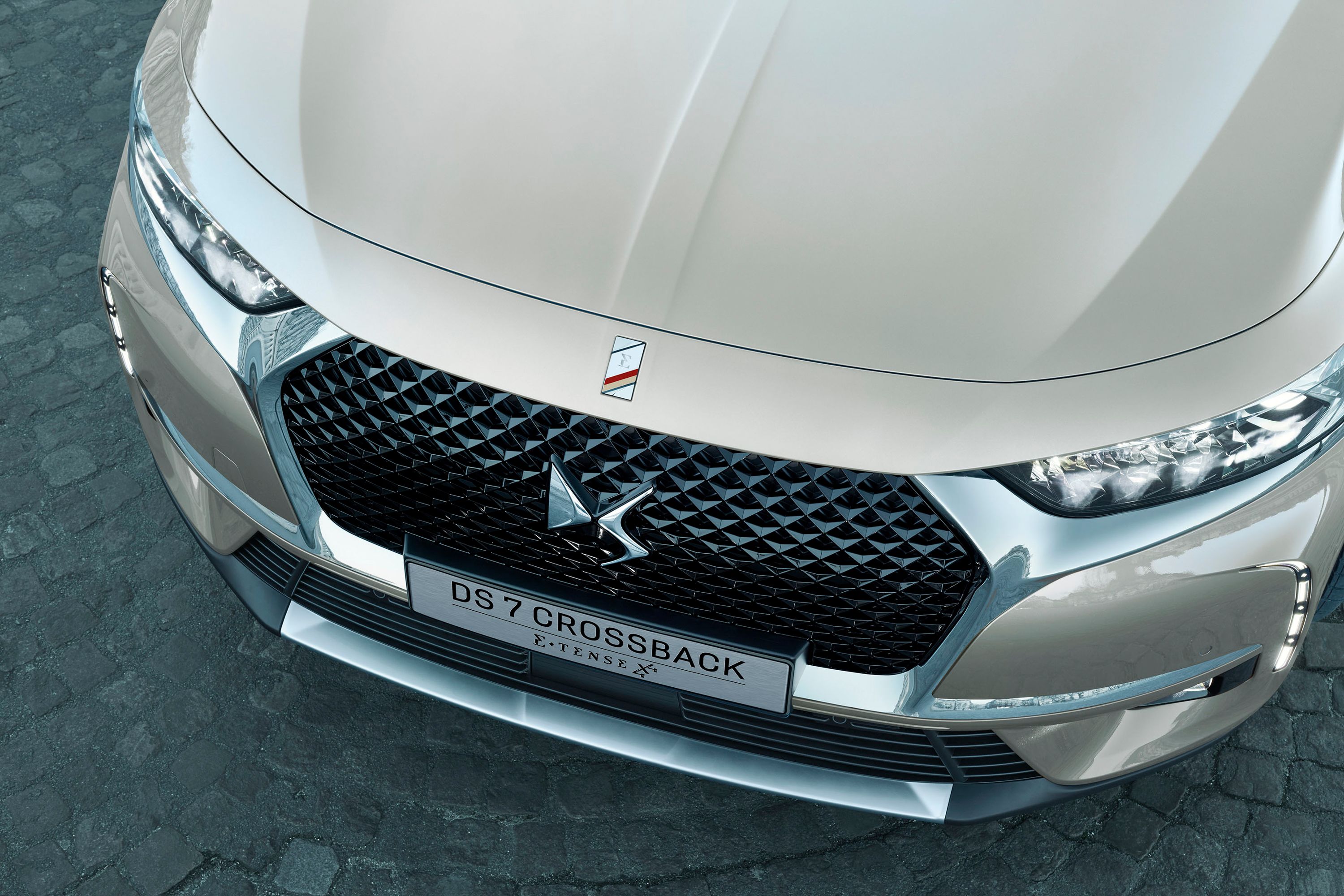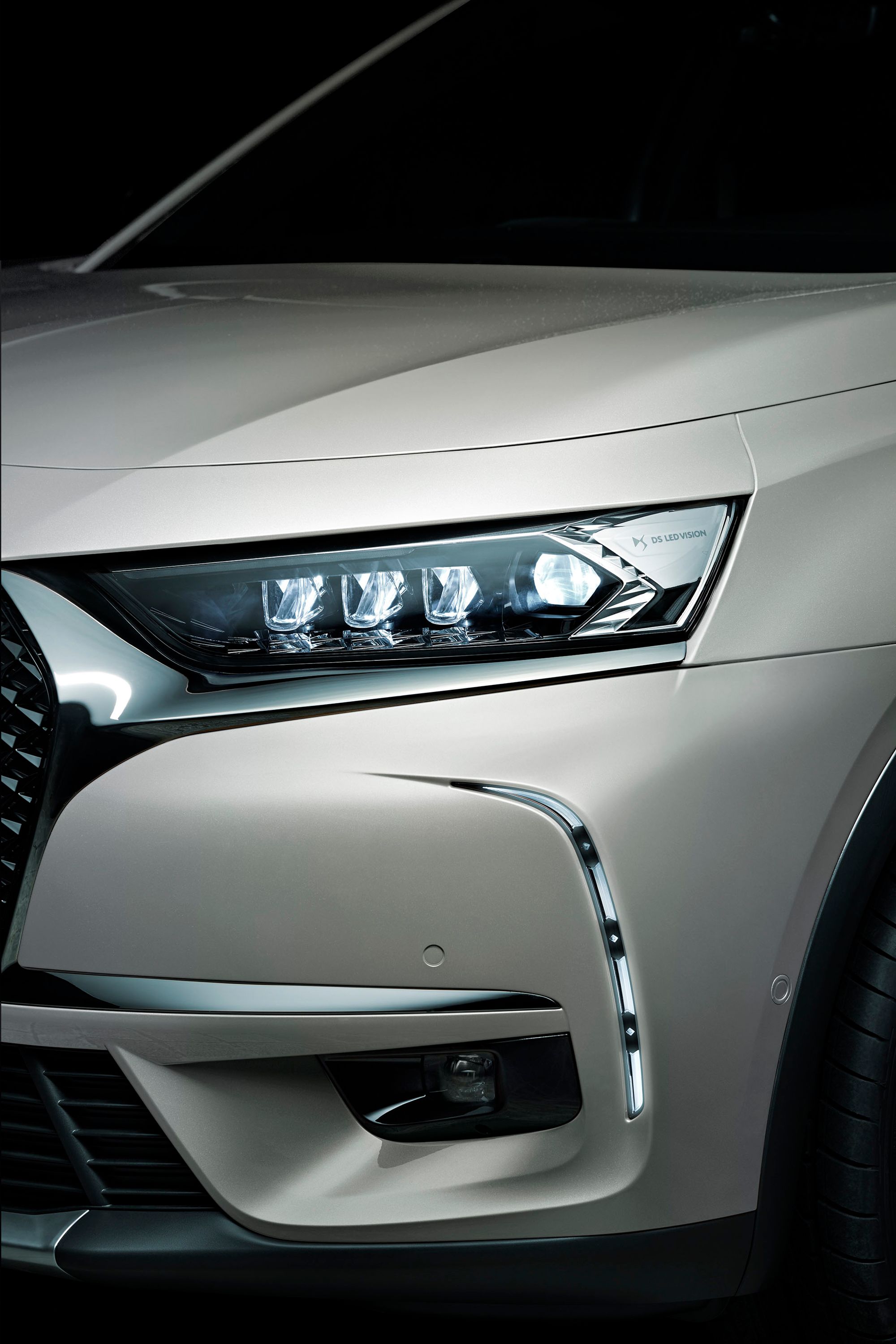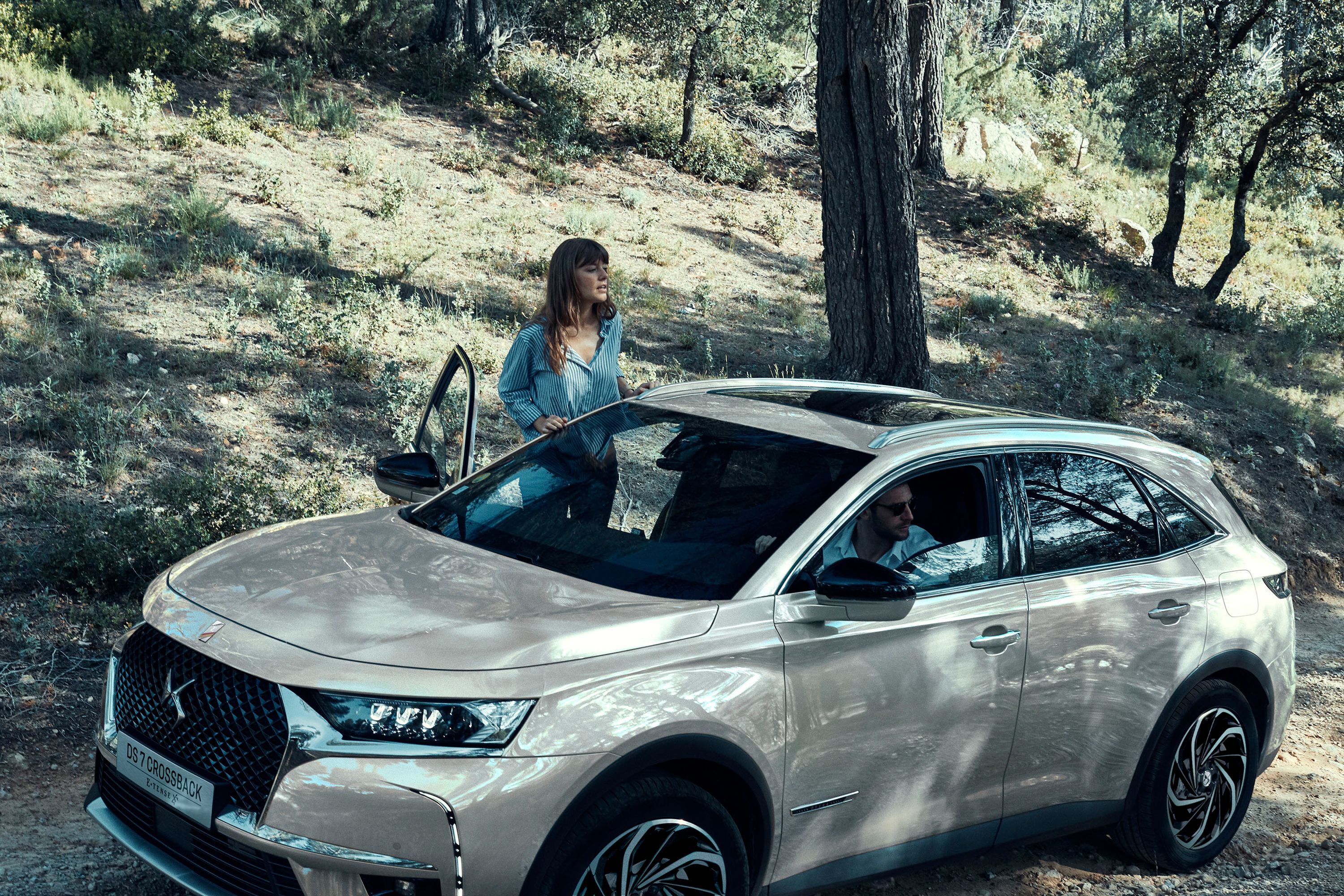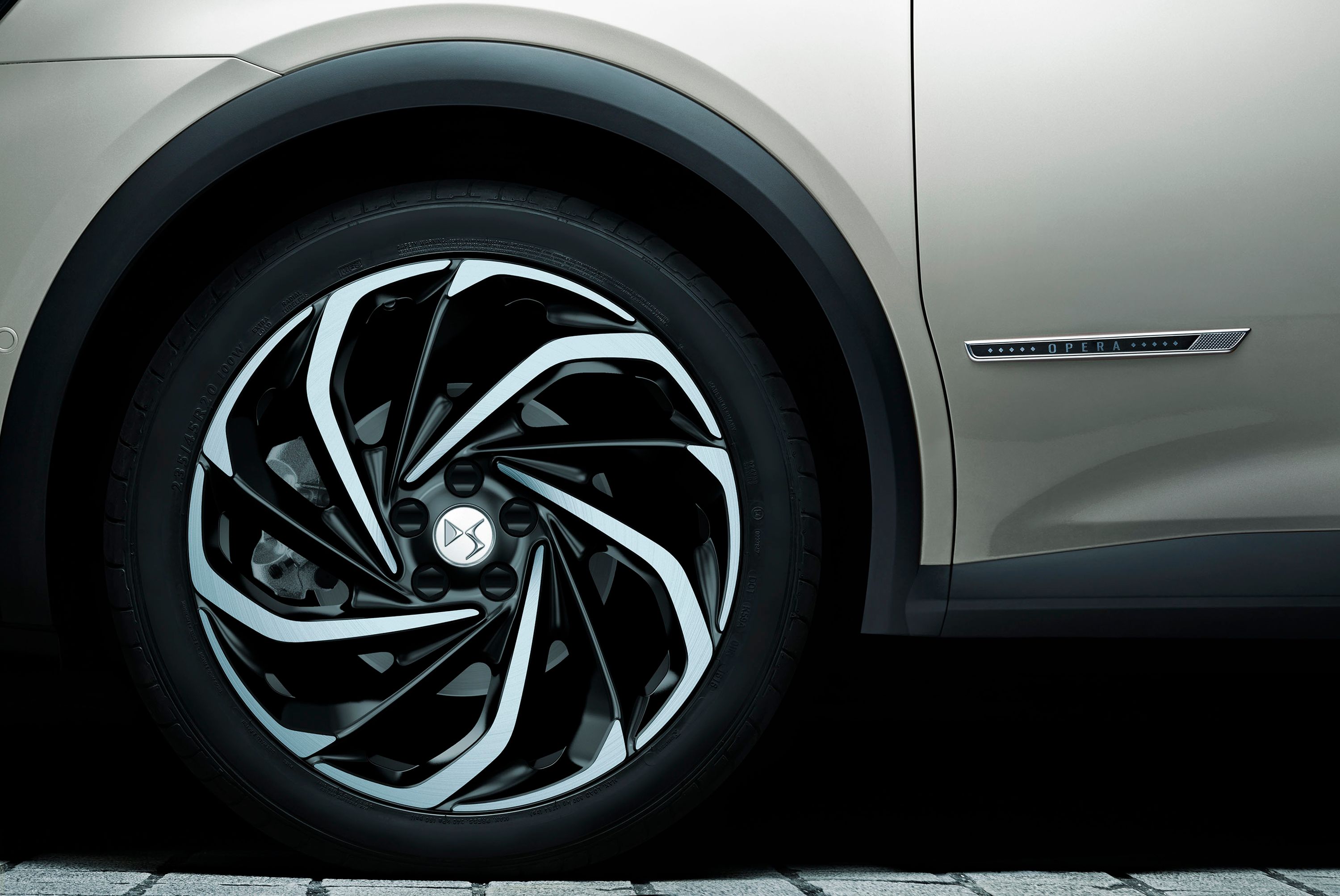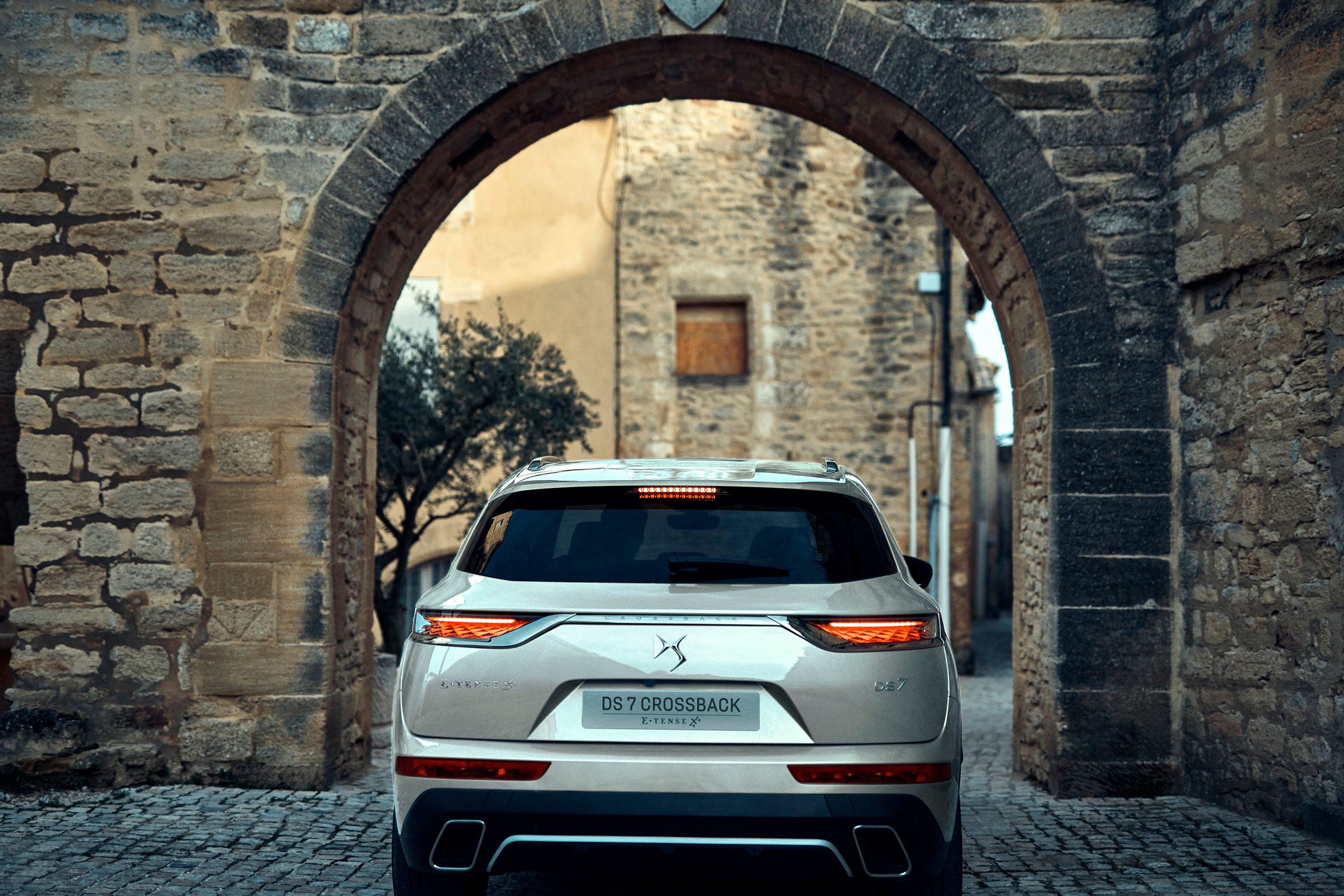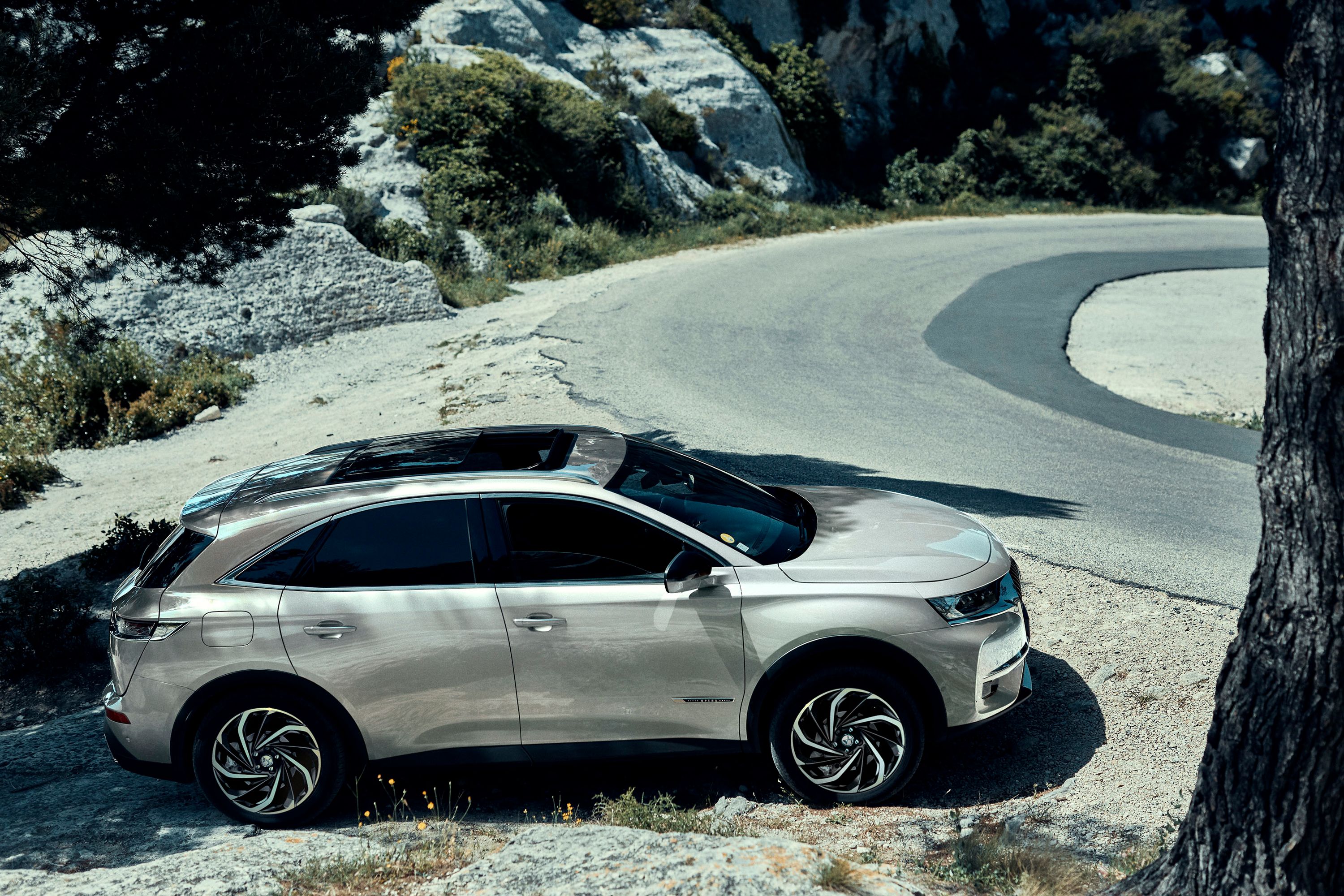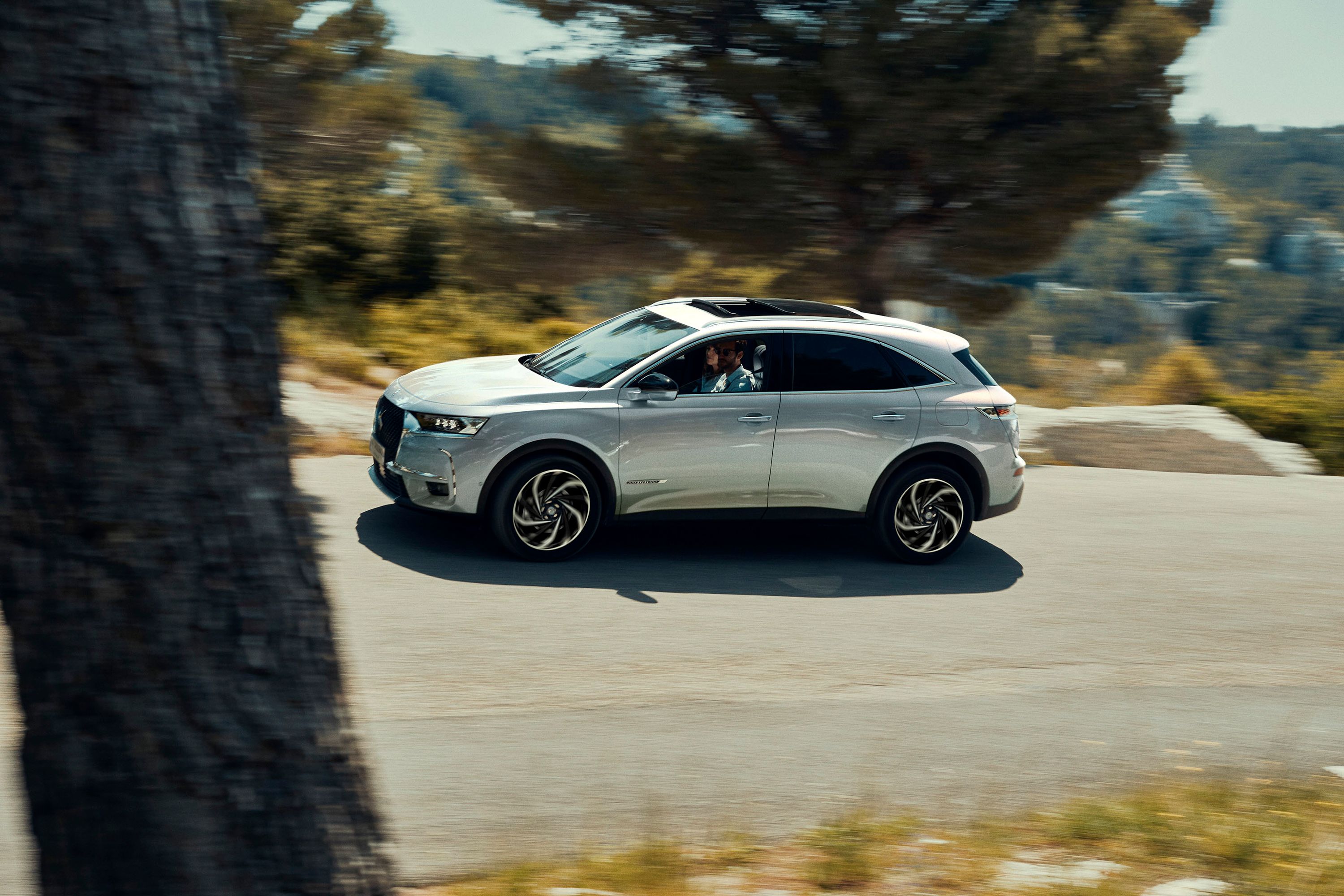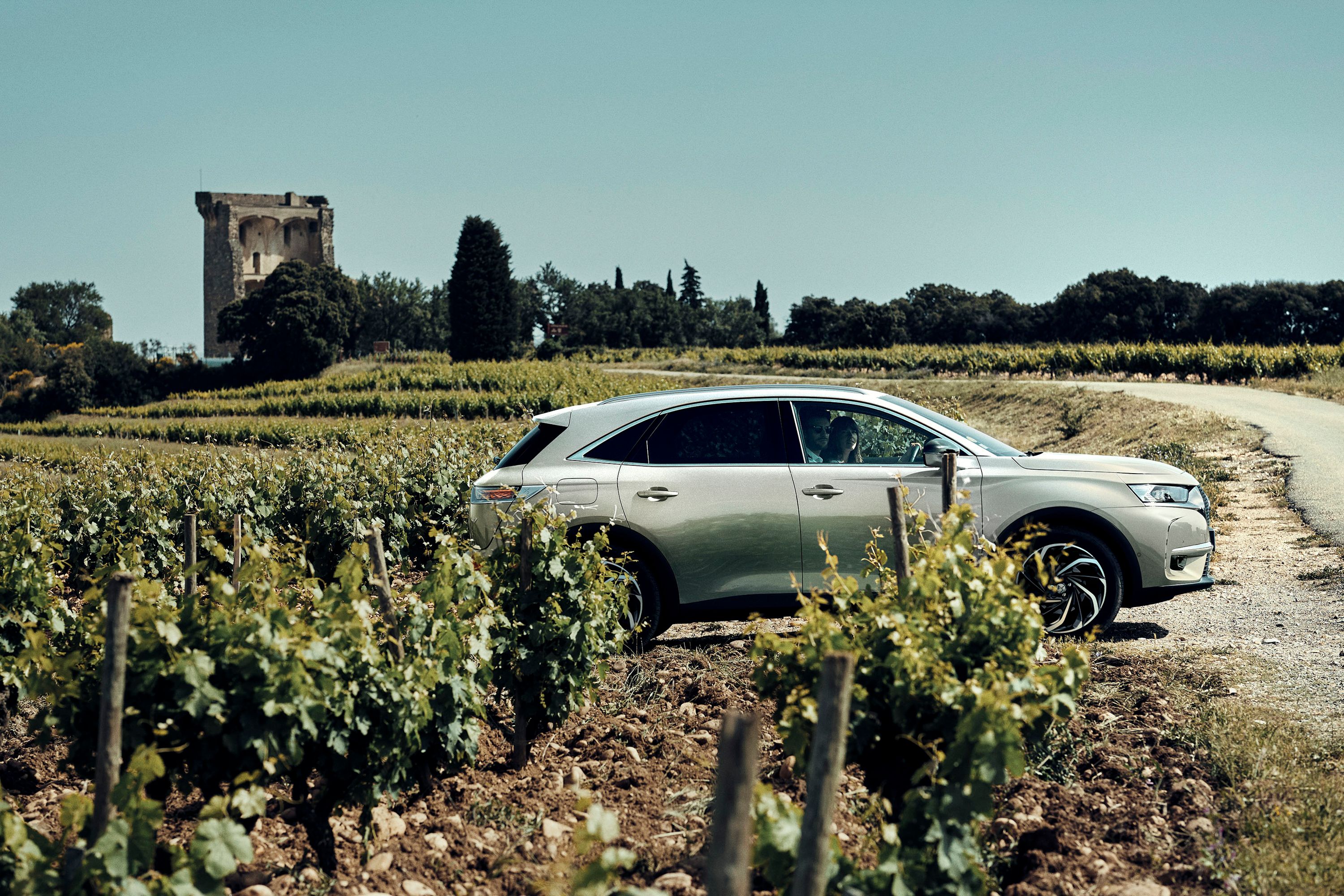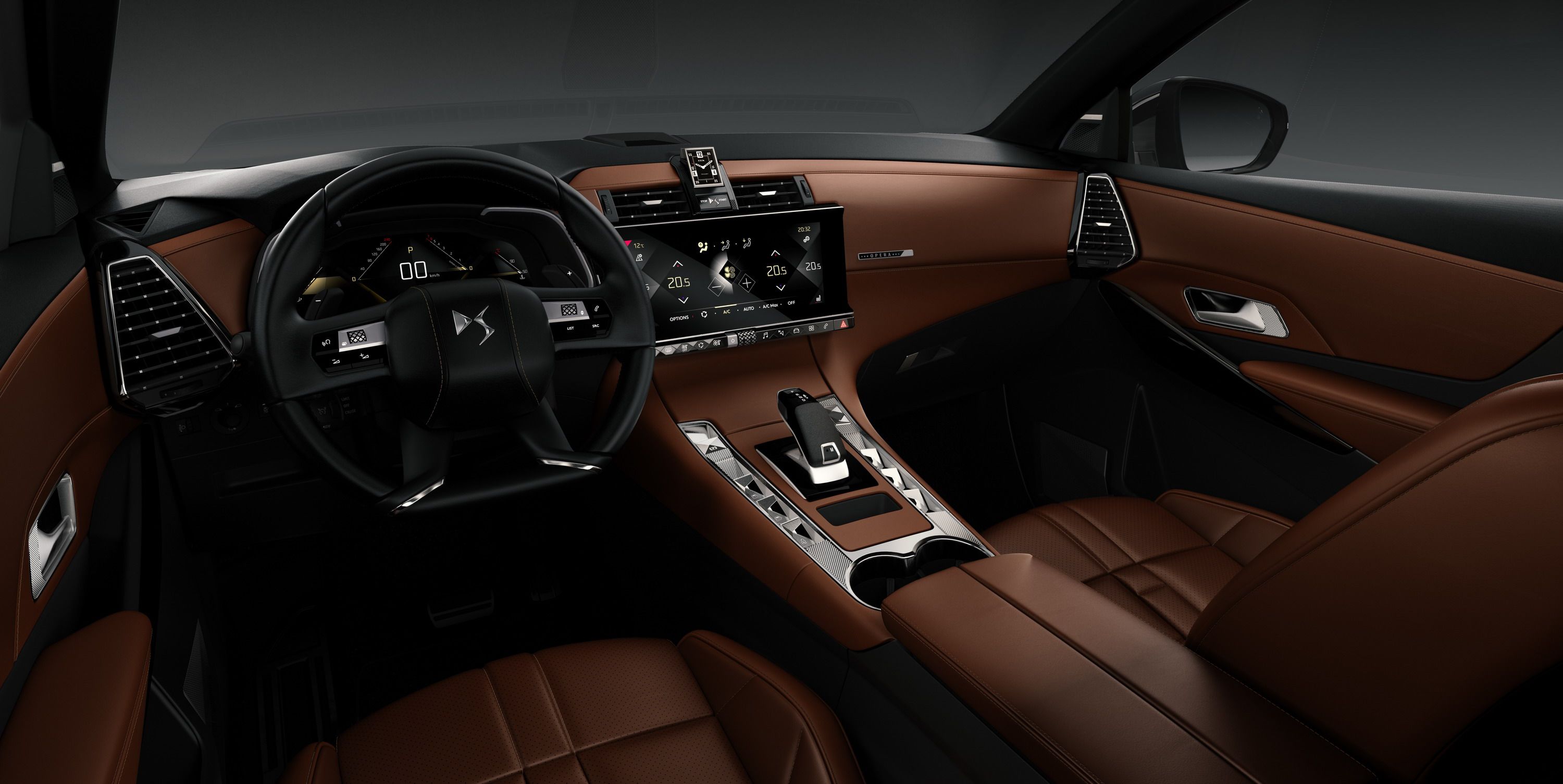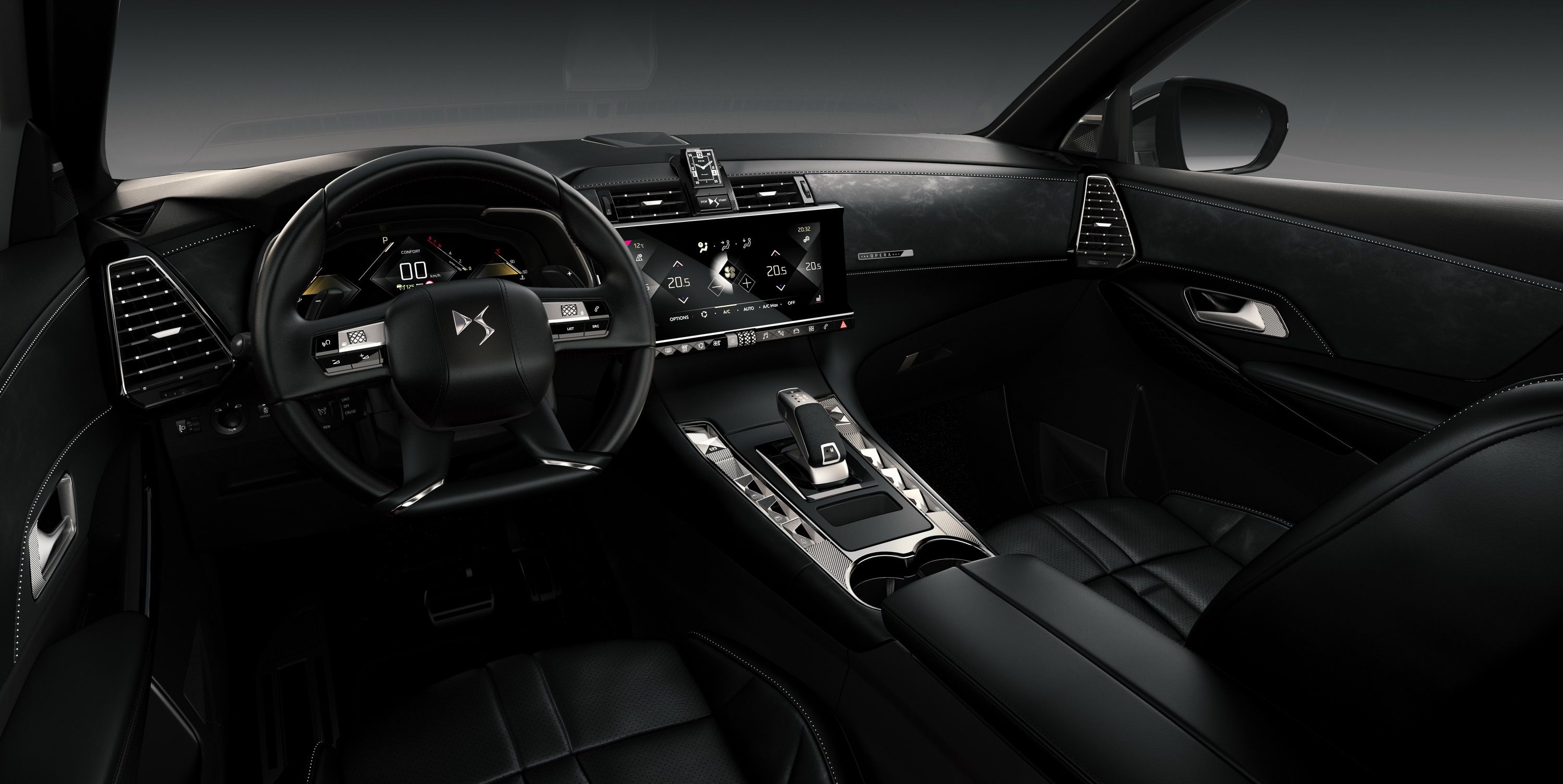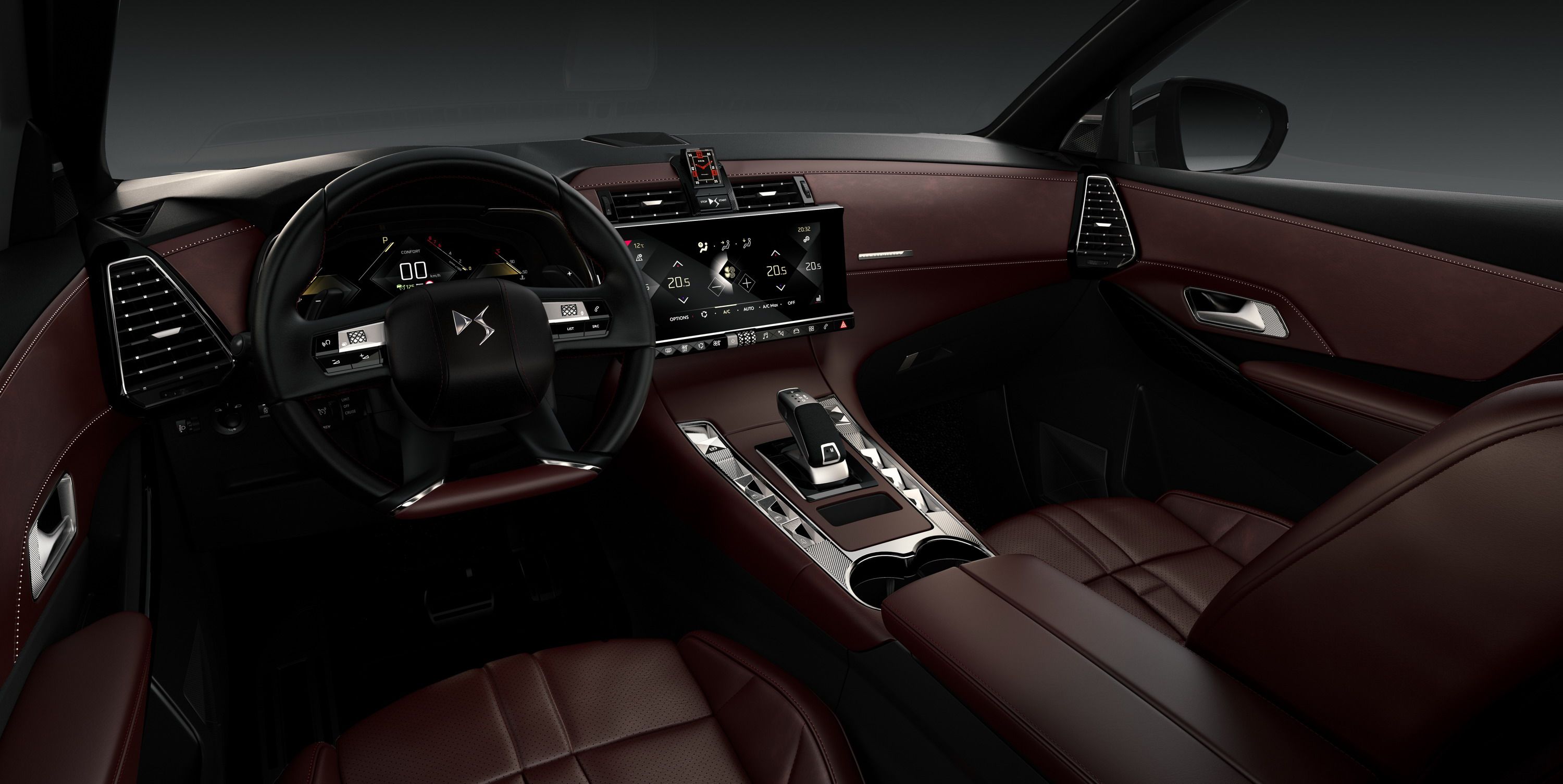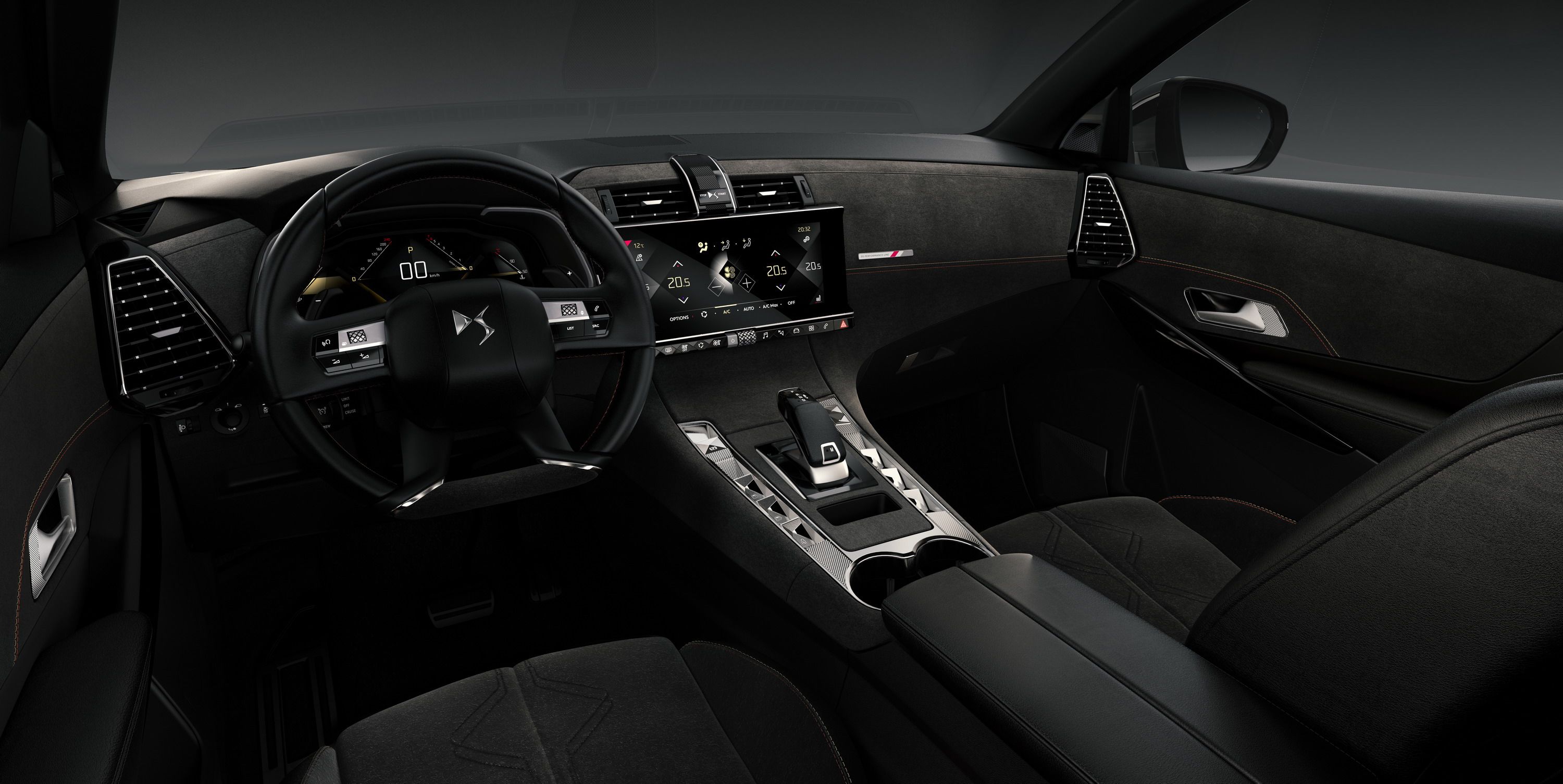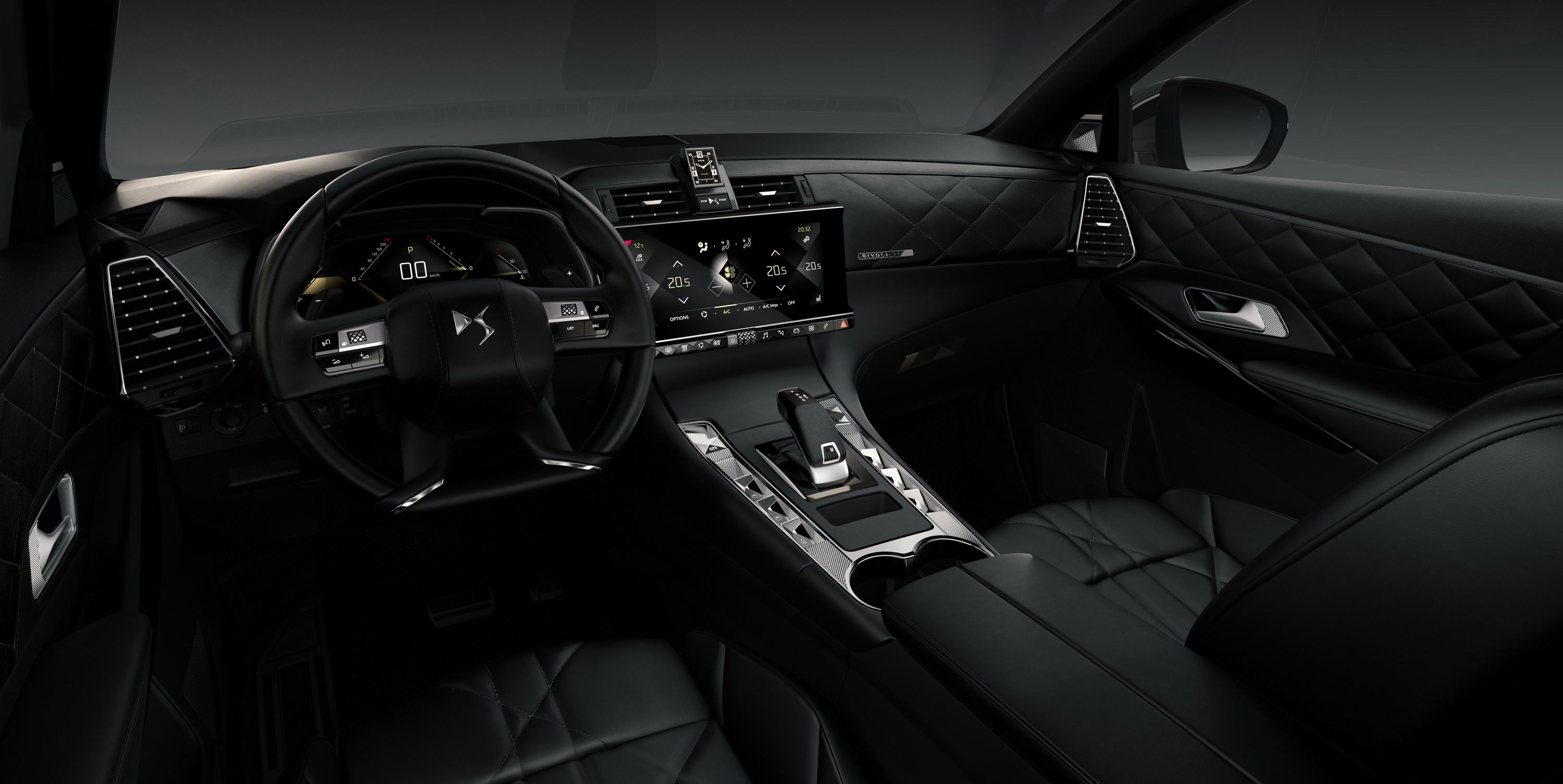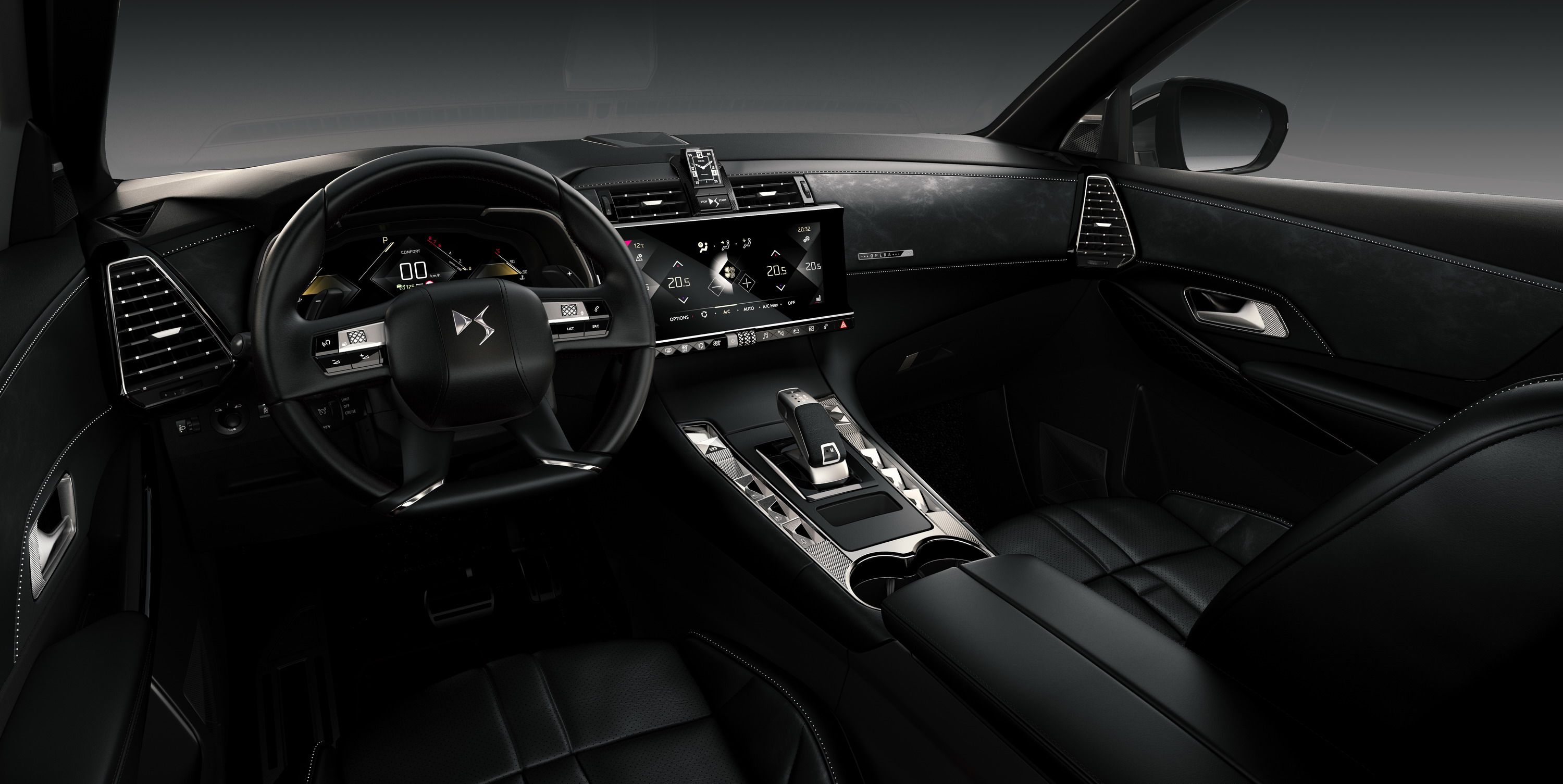DS has been trying hard to give stiff competition to the German trio since its inception three years back. Despite having some quality vehicles like the DS3, DS4, and DS5, to name a few, the PSA Group marque has yet to announce itself as a serious threat to the rivals. In a valiant effort yet again, DS introduces the DS 7 Crossback E-Tense 4x4 – its first plug-in hybrid offering. Does this crossover have enough to stare down the German bullies?
2019 Citroen DS 7 Crossback E-Tense 4x4
- Make: Array
- Model: 2019 Citroen DS 7 Crossback E-Tense 4x4
- Horsepower: 300
- Torque: 332
- Transmission: Eight-speed automatic
- [do not use] Vehicle Model: Array
Exterior
The front looks intimidating with the DS logo slapped on the black mesh grille. The headlights get an LED set-up and are aligned nicely with the grille. Fog light housings are at the bottom on either end, which gives a good throw on the road. The daytime running lights are placed vertically and complement the overall look of the fascia very well.
The profile of the car is neutral, with no extra shenanigans whatsoever. Wheel arches get plastic cladding on the edges and fit the 19-inch wheels nicely. The alloys get a fancy 10-spoke design finished in chrome. I would have preferred black or gunmetal, though. However, the glasshouse area is inadequate. With a black interior, you are bound to feel claustrophobic. The sloping roof at the rear doesn’t help either. There is a panoramic sunroof which offers a little consolation.
The rear of the DS 7 Crossback E-Tense is round. This makes the car look short and stout from behind. The crossover gets two rectangular exhaust pipe outlets and a skid plate at the bottom. The taillights have an interesting detail inside them, with chrome treatment on the edges. Personally, I think the chrome bits are a little too much on the car. Do we still live in an era where chrome is synonymous with luxury?
Interior
|
Note: 2018 DS 7 Crossback pictured here. |
The touchscreen infotainment system gets all the bells and whistles, like Android Auto, Apple CarPlay, navigation, rearview camera, etc. That said, even though the touchscreen sits flush, it looks "stuck" on the console, rather than integrated into it. Below that is a sexy gear lever with other basic essentials, like cupholders. The digital instrument panel is bright and visible even under the bright sun thanks to the cowl over it.
Cabin space is plentiful and will keep all the occupants happy. If I had to pick one con, it would be the headroom at the rear. The sloping roof eats into the headroom, making it tougher for taller folks. The seats get enough bolstering and hold you in well. However, the armrest and gearbox console is a little too wide. This ends up limiting the legroom for both the driver and the passenger.
Cargo space is no concern as well. A flat-bottom steering wheel gets thumb-length controls. But the classiest thing amidst all this technology and sophistication is the simple analog clock in between the front A/C vents!
Drivetrain & Performance
Under the hood of the DS 7 Crossback E-Tense 4x4 is a turbocharged 1.6-liter gas engine that produces 200 horses. This is mated to an eight-speed transmission system, as well as an electric motor that generates 109 horsepower. A second electric motor is connected only to the rear axle which also produces 109 ponies.
I’m a firm believer of "no replacement for displacement," so the specs look weak to me. But performance wise, the crossover is quick and agile, thanks to the direct drive from the motors to the wheels. The DS 7 Crossback E-Tense can go from standstill to 62mph in 6.5 seconds. In all-electric mode, the car tops out at 83 mph, and in pure gasoline form, it reaches a high of 136 mph.
The crossover comes packed with a 13-kWh hour battery, which is placed under the rear bench. The clever placement means that neither the trunk nor the cabin space is compromised. The left rear wing holds the charging port.
Despite providing a battery that has 50 percent more capacity than most other PHEVs out there, it missed out on offering rapid charging. It can be charged in two hours with a 6.6 kW charger using a wall-mounted terminal (32A), four hours on a 14A "Green Up" plug, or eight hours with a traditional socket. The batteries add 550 pounds to the curb weight, but the DS 7Crossback E-Tense is still quick off the mark.
The crossover offers several different drive modes to choose from. These include Zero emission, which runs purely on electric mode. On a full charge, it can run for 31 miles. This also happens to be the default mode. Then there's Sports, which combines both the motors to churn out maximum power. Hybrid mode is for max fuel efficiency, and the car acts like a slouch. As per the specs, the emissions are under 50 g/km. Finally, 4WD mode makes for maximum traction in all road conditions.
Also, the E-Tense used regenerative braking, wherein the power is regenerated everytime the car decelerates. The combined fuel consumption is rated at an insane 128 mpg according to WLTP. This is definitely going to be radically different in real-world conditions. We’ll have to wait for the first drive to confirm this.
Pricing
The DS 7 Crossback E-Tense 4x4 is expected to have a starting price of $65,000.
Competition
Acura MDX Hybrid
This SUV is perhaps DS 7 Crossback E-Tense’s biggest rival. The MDX Hybrid runs on a 3.0-liter V-6 engine that produces a combined output of 321 horses and 289 pound-feet of torque. It also gets four different driving modes, but is slightly faster than its French rival, going from 0 to 62 mph in six seconds. Despite praise for its driving dynamics and all-roundedness as an SUV, the MDX Hybrid loses out on the one thing people look for – fuel economy. Delivering 27 mpg is not a feat to be proud of, and that is one of the biggest reasons for the MDX Hybrid to not be very successful. The Acura MDX Hybrid retails at $60,000.
Read our full review of the 2017 - 2018 Acura MDX.
Volvo XC60 T8 Plug-In
Known to be the brand which does not concentrate on power, Volvo has broken that image with this SUV. The SUV features a 2.0-liter four-cylinder engine with a turbocharger, supercharger, and two electric motors to produce a combined power output of 400 ponies and 472 pound-feet of torque. This lets the car zoom to 62 mph in a mere 4.9 seconds. But how often would you get the adrenaline rush to zip the car? What you need is a car pacing itself from the word "Go," and despite all these wow-worthy figures, this SUV suffers from turbo lag! The powertrain has an uneven response and is not a daily driver’s car. However, in terms of the interior and technology, it is arguably the best-in-class. Cabin space and cargo space is impressive, while the EV range is rated at 18 miles, which isn't that bad. Pricing starts at $55,000.
Read our full review of the 2018 Volvo XC60.
Final Thoughts
To put things into perspective, the exterior is good, but may not appeal to everyone. The interior is impressive, but the XC60 T8 Hybrid is better. Performance-wise, the real-world figures are still unknown. All in all, the DS 7 Crossback E-Tense 4x4 is not a winner in any individual aspect.
However, none of it is a deal-breaker.
We’ve speculated the price to be around $65,000, and if DS decides to put a bigger tag, it will be dangerously close to the Tesla Model X’s territory. You don’t take a shot at the king of the jungle with your first move, DS. So, price the car around $55,000 to $60,000, and you’ll be enjoying your share of the pie very soon.
Further Reading
Read our full review on the 2018 DS 7 Crossback.
Read our full review on the 2016 DS 4 Crossback.

